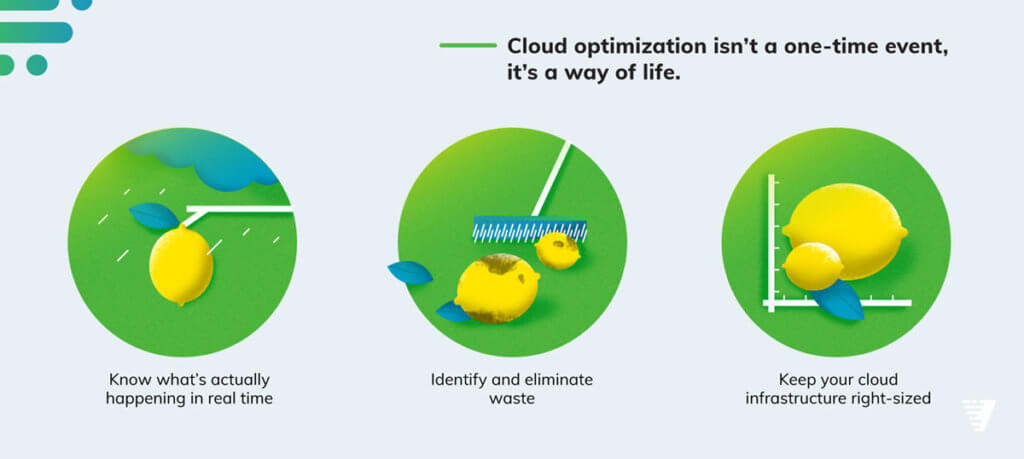The Cloud Optimization Imperative
Minimizing costs, reducing risk, and maximizing business value—all at the same time—requires a delicate balancing act. It’s not a new challenge, nor is it unique to IT infrastructures. But when it comes to the cloud, especially in hybrid cloud scenarios, it requires you to understand the performance, risk/compliance, and cost impacts of your current resource allocations and then adjust to maintain the optimal decisions to meet your SLA and budget targets.
Cost optimization is simply a fact of life in the cloud. Gartner states, “Through 2024, nearly all legacy applications migrated to public cloud infrastructure as a service (IAAS) will require optimization to become more cost-effective.” Clearly, it’s a big deal.
Why It’s So Hard to Understand Cloud Costs
It’s not just one thing. There are several factors that make it hard for IT organizations to understand what’s really going on and then make the right adjustments to get more value from their cloud spend.
- Cloud bills are notoriously complex. They can be vague and confusing. Even if they are detailed, it’s likely not categorized in a way that’s actually meaningful for your organization. And when there is an unexpected spike in cost, they may not give you the information you need to understand exactly where the added expense is coming from.
- You can’t easily assess the full range of influencing factors. A lot of optimization guidance focuses primarily on CPU utilization. But there are other computing dimensions that affect performance. You also need to take memory usage, IOPS, and network bandwidth, for example, into account when making configuration decisions.
- The array of configuration options is overwhelming. Not only do the total possible configuration permutations number in the hundreds of thousands, cloud providers are constantly introducing new types, sizes, and generations. That’s quite a haystack in which to find your optimal configuration needle.
- Forecasting is more of an art than a science. Even when you anticipate changes in your requirements, planning is complex and many tools fall short on giving you the full scope of information you need in a usable way.
The bottom line is that it can take way too long to discover problems—whether they result from changes or sub-optimal planning decisions. By the time you uncover an issue, you’ve already paid the price, whether that’s unnecessary costs or missed SLAs.
Change Happens: Cloud Management and Optimization Over Time

Cloud optimization isn’t a one-time event, it’s a way of life. (Tweet this) Your business—and therefore your workloads—are constantly shifting and evolving. Small changes eventually accumulate into big impacts. And unplanned surges need to be identified and addressed quickly. To keep performance high and costs in check, you need to be able to do three things:
- Know what’s actually happening in your environment. You need real-time monitoring to detect and alert you to large shifts in performance or capacity as they happen.
- Identify and eliminate waste. You need to be able to easily perform multi-dimensional analysis to identify misallocated resources and unnecessary spend.
- Keep your cloud infrastructure right-sized. You need to be able to quickly identify and move to the most stable and affordable configurations for your resources and requirements.
Cloud Cost Optimization Tools and Capabilities
Getting the visibility, analytics, and insight you need to keep your cloud infrastructure optimized requires having the right toolkit. Ask yourself the following questions to identify critical capabilities you may be missing:
- Can you easily see all your cloud costs at a glance?
- Can you catch and address budget-busting expenses before they hit your monthly bill?
- Can you drill down into your cloud services, filtering and grouping by a wide range of dimensions?
- Can you create and schedule custom reports for automatic delivery to your team?
- Can you configure notifications to alert you to conditions that break the thresholds that you care about?
- Can you easily find unused resources, such as stopped or unattached storage volumes, that are costing you money?
- Can you identify and justify spend needed to prevent performance bottlenecks before users are affected?
- Can you effectively plan reserved instance purchases to avoid over-buying reservations?
- Can you easily find the ideal resource settings before making long-term reservation commitments?
- Are you confident in your ability to strike the right balance between infrastructure agility and deep savings?
If you answered “No” to any of the above, then you’re not getting the maximum value from your cloud spend. The good news is that there are solutions to help you fill these gaps (check out the cloud cost optimization capabilities of Virtana Cloud Cost Management).
The bottom line: Given the strategic nature of technology for virtually every organization today, maintaining the optimal balance between performance and cost is a critical driver in overall business success.
Virtana: Your Cloud Optimization Partner
With Virtana Cloud Cost Management, you can analyze, manage, and optimize your cloud costs. Get clear visibility over your cloud bill to stop wasting money. Try it for free
Cloud Optimization and Rightsizing

Scott Leatherman




